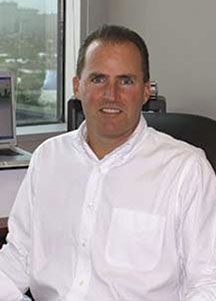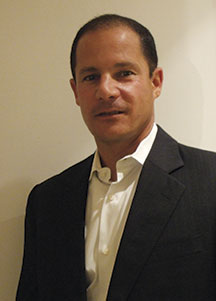INTERVIEW

The markets
are an expensive way to learn about yourself.
—Martin Bedick

It takes a lot of
discipline, heavy on
risk management.
—Andrew Abraham
Follow That Trend
Martin Bedick And Andrew Abraham On Improving Your Trading Results
Martin Bedick, who is a principal and managing partner of Angus Jackson Inc., has been working in the financial industry for more than 25 years. From 1980 to 1990, Bedick worked as a financial consultant with individual clients at major US financial institutions, including Smith Barney and Paine Webber. In 1992 he became a principal of Angus Jackson of Florida, an Introducing Brokerage firm. His duties include working with clients to implement low-risk strategies designed to take advantage of potential opportunities in the futures and commodity markets. He has worked with a number of trading system developers and has been involved in designing trading programs with a major emphasis on risk control.
Andrew Abraham is the marketing manager for Angus Jackson Inc. Abraham has been managing his investments since 1994 with a concentration on alternative investments. He joined Angus Jackson Inc. as an associated person in 1998. He has been investing in managed futures, hedge funds, and real estate since 1994.
Editor Jayanthi Gopalakrishnan and Staff Writer Bruce Faber interviewed Martin Bedick and Andrew Abraham on September 1, 2010, via telephone. Martin Bedick is identified by “MB” and Andrew Abraham is identified by “AA.”
How did you get interested in trading? Martin?
MB: I was always interested in the markets. What intrigued me was the question of “How do you trade profitably? How do you consistently make money?” Then I learned that the brokerage business per se had nothing to do with that. Then my interest quickly became “How does someone trade successfully? How do you do it consistently?” Then I really got interested in the late 1980s, around when the original Market Wizards book by Jack Schwager came out. I attended a couple of seminars with Van Tharp, with Ed Seykota, people who were successful traders. In the early 1990s I came to Angus Jackson as an associate and ended up buying the firm with a partner in 1992 or 1993, and began to work with individual clients.
How about you, Andy?
AA: I had a business, grew it, and sold it in 1994, and I asked my accountant, who was also Martin’s, what I should do with the money. He put me in touch with various people, and one of them was Martin. That relationship developed and seeing how difficult trading was, I wanted to understand how I could get better at it. I saw that Martin was successful and I wanted to learn from him. I had to do a tremendous amount of learning on my own to figure out what it takes to be a successful, long-term investor. I compounded that nest egg into wealth. There is no secret. It takes a lot of discipline, and patience, with a thought-out plan that is heavy on risk management.
Did you just start trading in commodities, or did you start with something less risky, like equities?
AA: It is all the same. What it comes down to is trend-following. What I saw were the mistakes, and Martin enlightened me about the mistakes that traders and investors make. What I look at are the risk management ideas. It is the risk per trade, the risk per sector, and then the open-trade risk. A lot of investors/traders don’t think of it this way.
One example I saw is where, let’s say, we get a signal in the bonds. We’ll buy every bond imaginable and be overweight in the bonds. But then you wake up one morning and all those trades have gone against you. When they work they work very nicely, but when they don’t, you can get your head handed to you. That is what we look to avoid. We try to make it as smooth as possible and minimize some of that aggravation.